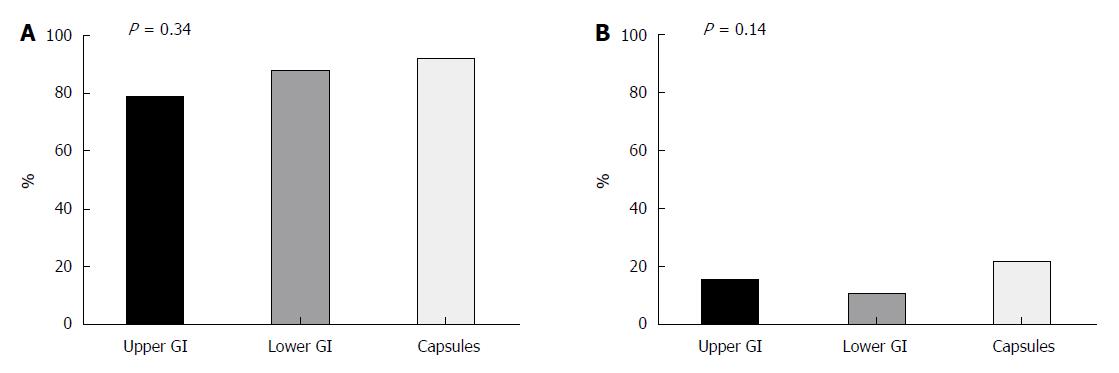Copyright
©The Author(s) 2018.
World J Gastroenterol. Dec 21, 2018; 24(47): 5403-5414
Published online Dec 21, 2018. doi: 10.3748/wjg.v24.i47.5403
Published online Dec 21, 2018. doi: 10.3748/wjg.v24.i47.5403
Figure 1 Comparison of success and recurrence rates of Clostridium difficile infection fecal microbiota transplantation treatment according route of administration.
Fecal microbiota transplantation (FMT) was performed in recurrent Clostridium difficile infection (CDI) patients through upper gastrointestinal (GI) (n = 24), lower GI (n = 50) or capsules (n = 37). Success rates at 2 mo (A) and recurrence rates (B) at 6 mo post-FMT were similar between the groups. GI: Gastrointestinal.
Figure 2 Comparison of fecal microbiota transplantation success rates among hospitalized and ambulatory patients.
Seventy-eight patients who underwent ambulatory fecal microbiota transplantation had a success rate of 92.3% compared with 75.8% for hospitalized patients, P = 0.016 (A). Success rates were much lower among patients with severe Clostridium difficile infection compared with mild-moderate disease (B). CDI: Clostridium difficile infection.
- Citation: Greenberg SA, Youngster I, Cohen NA, Livovsky DM, Strahilevitz J, Israeli E, Melzer E, Paz K, Fliss-Isakov N, Maharshak N. Five years of fecal microbiota transplantation - an update of the Israeli experience. World J Gastroenterol 2018; 24(47): 5403-5414
- URL: https://www.wjgnet.com/1007-9327/full/v24/i47/5403.htm
- DOI: https://dx.doi.org/10.3748/wjg.v24.i47.5403










